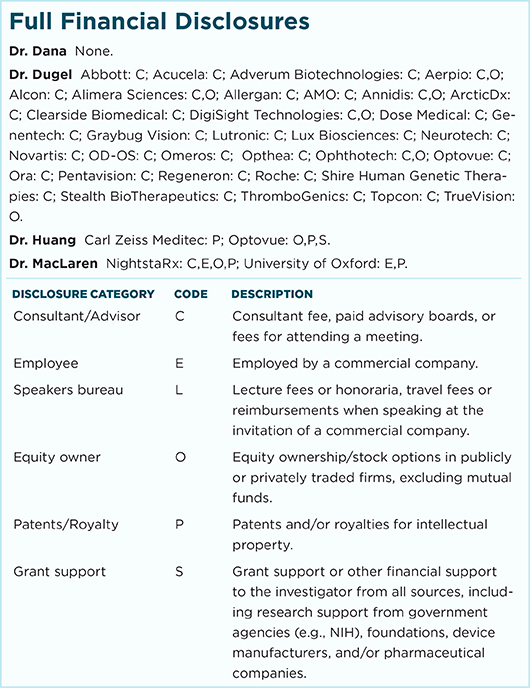Download PDF
British vitreoretinal surgeons have successfully used an ophthalmic surgical robot to perform the painstaking procedure of peeling retinal membranes, in a proof-of-principle study that they view as a step toward someday performing robot-assisted subretinal injections of therapeutic genes.1
Groundbreaking procedure. In response to the surgeon’s manipulation of a joystick, the robot inserted a vitreoretinal pick through a 23-gauge trocar, advanced it toward the retina in 10-μm increments, and used the curved tip to lift the patient’s epiretinal membrane or internal limiting membrane (ILM) in 6 patients, said Robert E. MacLaren, MD, PhD, principal investigator in the trial. There were no complications, he reported. (A second set of 6 patients served as controls.)
“We wanted to test the robot with the most delicate procedure that we currently do with our hands, and that is lifting the ILM. When we do that manually, invariably we cause a little bit of trauma to the retina. So we used retinal hemorrhages and retinal touches as a marker for the precision of the robot,” Dr. MacLaren said.
Less retinal trauma. Even the steadiest surgeon’s hand can move a needle tip toward the retina with precision of no better than about 100 μm, compared to 10-μm movements with the robot, said Dr. MacLaren, at the University of Oxford in the United Kingdom. Because of this, his group was not surprised to find that the robotic surgeries caused less retinal trauma than did manual membrane peeling in the control patients, he said.
Surgical outcomes. There were 2 retinal microhemorrhages and 1 retinal touch in the robot-assisted surgeries, compared to 5 and 2, respectively, in the control group. However, it took longer to lift the membranes with the robot: a mean of 213 ± 51 seconds, versus 130 ± 118 seconds in the manual group, he said.
“You have to bear in mind that those 6 patients represented the first 6 patients when the robot was ever used in a human. And obviously I was a bit anxious doing it,” Dr. MacLaren said. “The time of the sixth patient was actually quite a bit quicker than the first.”
Potential applications. Looking ahead, the most exciting potential uses for the robot—developed by Preceyes BV in collaboration with Oxford researchers—are the surgical innovations that it might facilitate, Dr. MacLaren said.
Gene therapy. For instance, his group’s primary objective for the near future is to take advantage of the robot’s ability to hold instruments stable inside the eye, in order to perform slow, subretinal delivery of viral gene therapy vectors. The group is conducting gene therapy trials for choroideremia and X-linked retinitis pigmentosa, Dr. MacLaren said.
Novel procedures. Looking further out, Dr. MacLaren expects that the robot will “help surgeons develop operations that we currently can’t do.” He added, “We need to think a little bit out of the box. For example, we look at the retina with optical coherence tomography scans and see a great level of detail, but we can’t actually operate with that level of precision. The human hand is just too big and too bulky.”
In contrast, Dr. MacLaren said, “With a robot you could actually advance the needle halfway into the retina and deliver treatment there. Or you could go through the retina to the junction between the retinal pigment epithelium and the photoreceptors.”
Direct to the nerve. Perhaps one day the robot even could make it possible to treat the optic nerve directly, he said. “Can you imagine, if you want to inject something into the optic nerve? This would be impossible with the human hand, but a robot could do that with a very, very high degree of precision, causing minimal trauma.”
—Linda Roach
___________________________
1 MacLaren RE et al. Results from the first use of a robot to operate inside a human eye. Paper presented at: ARVO 2017 Annual Meeting; May 8, 2017; Baltimore.
___________________________
Relevant financial disclosures—Dr. MacLaren: NightstaRx: C,E,O,P; University of Oxford: E,P.
For full disclosures and disclosure key, see below.

More from this month’s News in Review